
South America is a continent of contrasts and extremes, with so many bucket list destinations. Home to dense rainforests and cloud forests that are full of wildlife and birdlife, along with the most arid desert in the world. You’ll find the snow-capped Andean mountain range, active volcanoes and untouched wild beaches. It’s not just all about landscapes and its varied geography though, South America is full of history and culture, thanks to its strong indigenous heritage whose traditions and customs differ enormously from country to country, as well as the fascinating archaeological sites and ancient ruins. There’s also no better way to be greeted then by a population of truly warm, welcoming and vibrant people. Keep reading to discover our top South America bucket list destinations.
This one is probably first on most people’s list – Machu Picchu is by far one of the most magical ancient ruins in the world! If you enjoy hiking, the options to get to Machu Picchu are endless.
The 3 night Inca trail is the most well known hike, and we can organise it in a pretty glamorous way (with private chefs and porters!). However, if you’re looking for a shorter version you can do the last day of the Inca trail, which has you arriving into Machu Picchu in the afternoon, ready for a full tour of the ruins the following day.
Our Classic Peru Itinerary perfectly incorporates Machu Picchu into a trip to experience everything Peru has to offer.
Don’t be fooled by everyone saying ‘you must get to Machu Picchu for the sunrise’. Although this could be amazing, the chances of you getting a clear sunrise over the ruins are pretty slim as you’re deep in the cloud forest where it’s unsurprisingly cloudy, and you’ll also find that it’s the busiest time of the day.
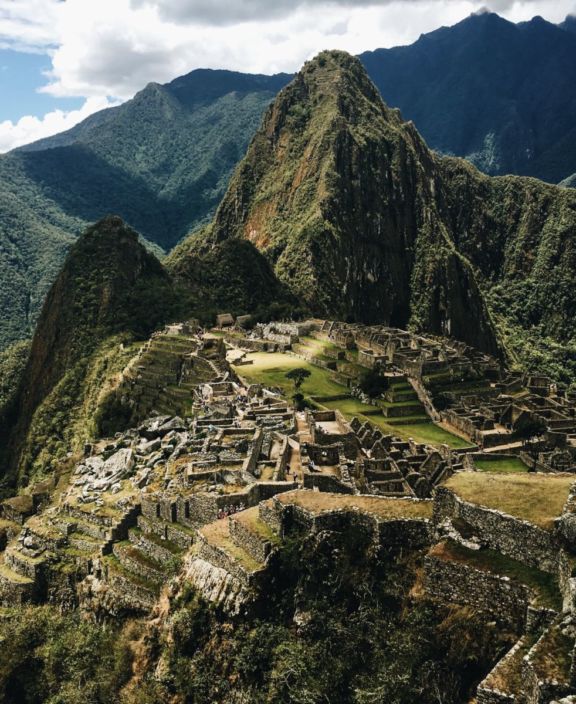
Flying over the largest waterfall system in the world is a truly exhilarating experience that you’ll remember for life! Its vastness can really be appreciated from this unique perspective where you’ll see approximately 275 different vertical drops expanding over 3km across the border of Argentina and Brazil.
You can visit the Iguazú Falls a number of different ways – strolling along the boardwalks, jumping on the national park visitor train, enjoying an exhilarating boat trip on the water itself or, our favourite, by helicopter ride – giving you a birds eye view of one of Latin America’s major highlights.
Our Argentina: Rainforests and Glaciers Itinerary has you experiencing the Iguazu falls, Buenos Aires as well as the lakes and mountains of Patagonia.
If you want a truly unique experience at Iguazu, Awasi Iguazu is our first choice, where their privately led excursions are curated for each individual visitor and you’re guaranteed to go truly off the beaten path.
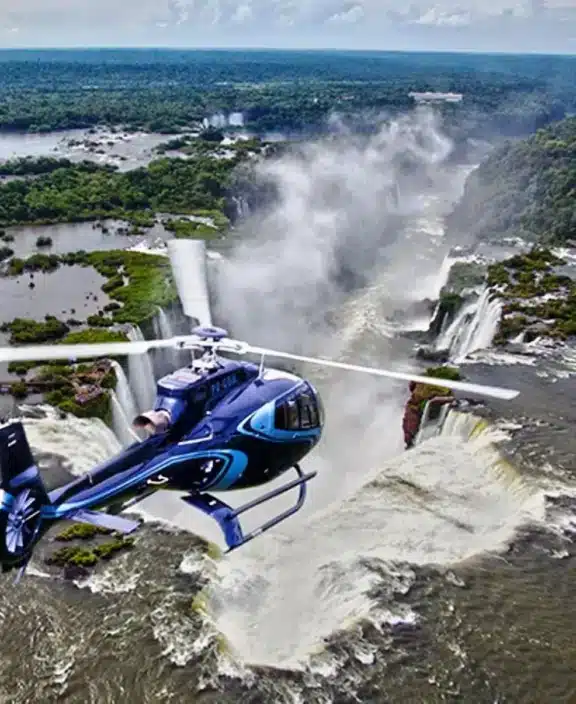
If simply viewing one of the biggest and most accessible glaciers in the world isn’t enough, try putting on some crampons and trekking on the ice itself! The photo opportunities are endless at this awe-inspiring sight and watch out for carving ice crashing into the lake.
‘The Big Ice’ is a full day of trekking on the ice (you’ll even have a picnic lunch on the glacier itself!) but there is also a half-day version which will still give you a taste of what this experience is all about. Expect to see blue lagoons, deep crevasses and impressive ice caves while surrounded by spectacular beauty.
Our Argentina: Rainforests and Glaciers Itinerary takes you into the heart of South and North Patagonia.
Pack well! They say Patagonia can have all 4 seasons in one day and it couldn’t be more true. Make sure you are prepared with waterproofs and windproofs as well as warm clothing in layers and sunglasses.
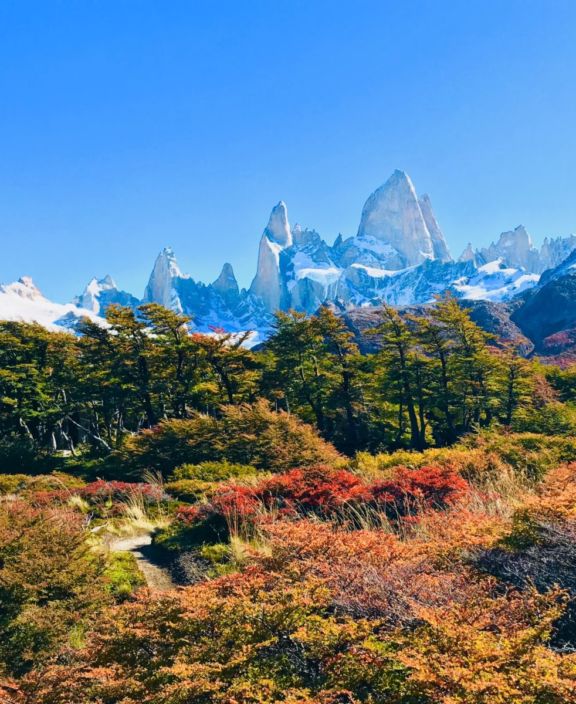
The Galapagos is a wildlife lover’s paradise where conservation and sustainability is at the heart of everything. The marine life is spectacular and it’s for this reason that deep water snorkelling should be on everyone’s bucket list when visiting these magical islands.
On land you’ll find giant tortoises, sea lions and colourful land iguanas and in the air you’ll come across multiple species of birds – frigates, waved albatrosses, Galapagos finches and hawks, blue and red-footed boobies, just to name a few. However, snorkelling in the Galapagos is on another level! It is as if you are in an aquarium, with hundreds of sea turtles, marine iguanas, sea lions, penguins, tropical fish, small sharks and many many more.
Our Family Adventure to Ecuador and The Galapagos Islands Itinerary provides an active and educational way of exploring two of Central America’s wonders.
If you can, try to get a cruise itinerary that includes a few of my favourite areas, such as Cerro Dragón on Santa Cruz, where a beautiful land iguana passed by me, Floreana Island, which just had the most beautiful beach, and Punta Vicente Lopez, which was excellent for snorkelling!
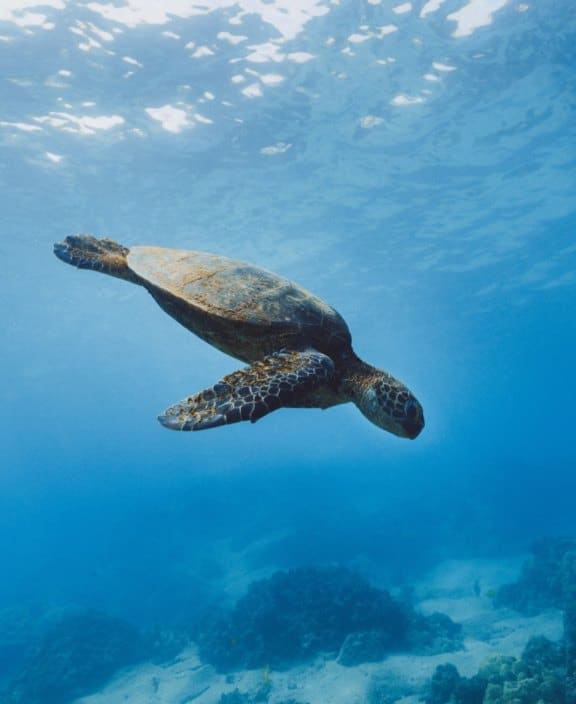
The Pantanal is a vast wetlands area between the two cities of Campo Grande and Cuiabá and is well-known for its safari-style wildlife experiences, including spotting giant-anteaters, capybara, caiman and jaguars.
While wildlife spotting can never be guaranteed, your chances of seeing this beautiful cat in the Pantanal are much higher, especially with the help of the Onçafari team. Your time in the Pantanal will be spent doing jeep-like safari activities, spotting capybara, caiman, giant anteaters and huge numbers of beautiful colourful birds. Due to its low-lying plains, the Pantanal is also famous for its spectacular sunsets.
Our From The Pantanal to The Amazon will have you exploring some of the world’s most interesting areas for wildlife.
Take part in Caiman Lodge’s Onçafari Project during your stay, which will have you helping the team to track jaguars using their camera traps. It’s a great way to learn about these elusive animals, contribute to the research project, and spot them too!
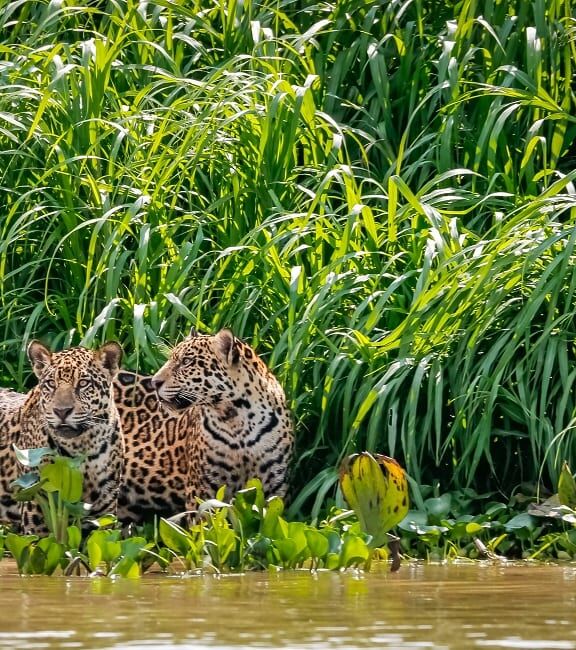
The Atacama Desert is like nowhere else on earth – the driest desert in the world (yet surprisingly wet in January & February), its lunar-landscape with ethereal rock formations is what gives the Moon Valley its name, not to mention the salt lakes, volcanoes and geysers.
The ‘Cejar Lagoon’ is a great place for a salty dip, and when you need to wash all that salt off, you can jump 3 metres into the ‘Ojos del Salar’ fresh water lagoons, which, according to the legend, are bottomless. Whether you’re floating in salty lagoons, hiking in Death Valley, admiring the sunrise by the Tatio Geysers or learning about the constellations, your time in the Atacama Desert will be unforgettable!
Our Chile: Central Valley and The Atacama Desert Itinerary takes you to explore the magical Lunar like landscape in the Atacama Desert.
The stargazing in the Atacama Desert is some of the best in the world. With close to zero light pollution and miles of nothingness besides rocks and lagoons, the sky seems enormous with trillions of twinkling stars. Don’t miss out on an observatory visit during your stay.
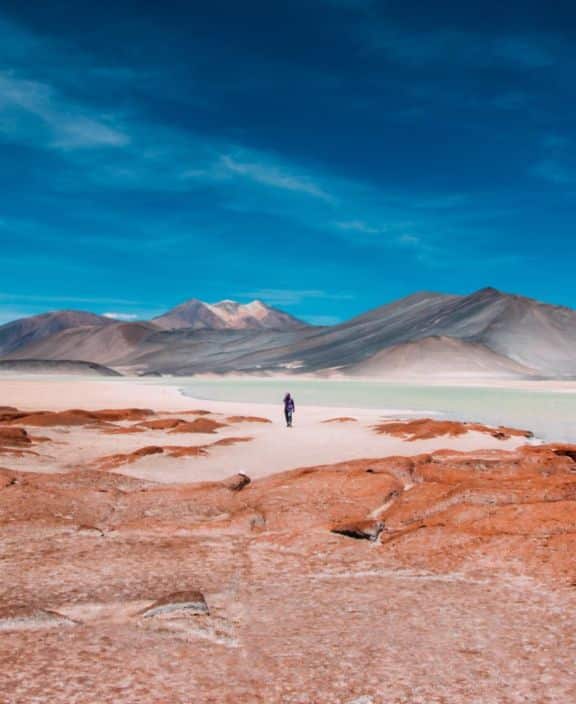
Tayrona is a protected national park, home to a number of indigenous groups, nestled between the beautiful Caribbean sea and the Sierra Nevada mountain range.
A protected national park in Colombia’s northeastern corner, Tayrona has a rich biodiversity, glistening lagoons, palm-fringed beaches and adventurous hiking trails. Expect to get sweaty, but it is all worth it. You’ll be hiking through the mountains until you reach the paradisiacal Caribbean coast, in its most pristine form.
Check out our Active Adventure in Colombia Itinerary, designed to take you through Tayrona National Park, the Andes and Chicamocha Canyon.
Tayrona National Park is closed for the month of February by request of the local population. Sep-November tends to be the most rainy season and trails can get quite muddy and slippery. Best time to visit will be Dec-January (busiest time) or March-May (less crowded).
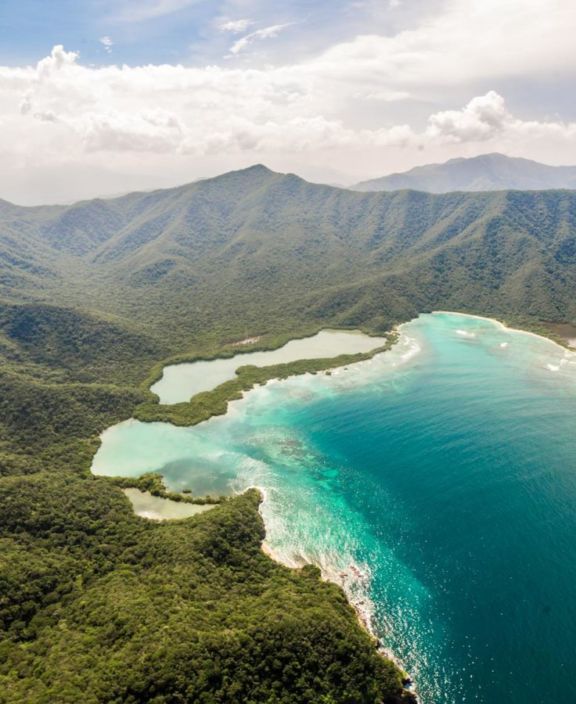

INSPIRATION
SIGN UP
Weekly travel inspiration, news and updates from our team of travel specialists
Sign up